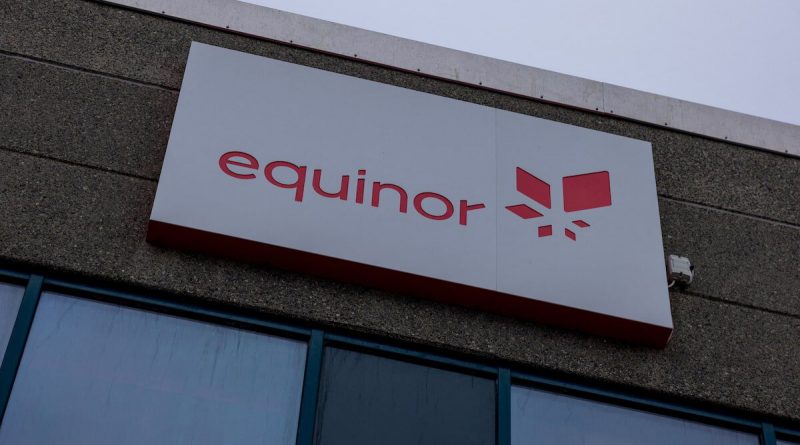Equinor Refocuses Green Strategy: Prioritizes Smart, Sustainable Energy Investments Amid Rising Costs
Equinor shifts gears toward cost-efficient sustainability, strengthening its focus on viable offshore decarbonization projects while reaffirming commitment to Norway’s long-term green goals.
Norwegian energy giant Equinor ASA has announced a strategic realignment of its offshore electrification plans, choosing to prioritize efficiency and long-term sustainability over soaring costs. The company has opted to streamline its focus on select projects, ensuring that its climate commitments remain economically viable while maintaining momentum toward Norway’s ambitious emission-reduction goals.
The decision, though seen as a recalibration, reflects a broader industry trend — one that emphasizes realistic, financially responsible pathways to decarbonization amid rising project costs and global market pressures. Rather than abandoning its green mission, Equinor is reinforcing its commitment to smart energy transition, focusing resources on high-impact areas like the Grane and Balder fields.
A Pragmatic Step Toward Sustainable Progress
Equinor announced that it will no longer pursue electrification projects at its Snorre A and B, Heidrun, Aasgard B, and Kristin platforms. However, the company reaffirmed its intention to move ahead with electrification of the Grane and Balder fields — both of which remain pivotal in its offshore emission-reduction roadmap.
“The costs of electrifying Snorre and the Halten area have become so high that the projects are no longer sufficiently profitable,” an Equinor spokesperson explained. “We therefore recommend discontinuing them.”
While this adjustment means Equinor will now reach 45% emission reduction — slightly below Norway’s 50% offshore climate target by 2030 — it remains a remarkable achievement considering global inflation, supply-chain disruptions, and rising energy costs.
Balancing Climate Goals with Economic Reality
Equinor’s recalibration is a reflection of the broader challenge energy producers face: balancing ambitious climate objectives with economic sustainability. The Norwegian oil and gas industry contributes nearly a quarter of the nation’s total greenhouse gas emissions, with around 80% of those stemming from offshore gas turbines.
For years, connecting offshore installations to renewable power sources on land has been central to Norway’s decarbonization strategy. However, the recent rise in project costs has made full-scale electrification less feasible in the near term.
Still, Equinor’s approach ensures that progress continues where it counts. Electrifying Grane and Balder alone is expected to cut 380,000 tonnes of CO₂ emissions annually, while previously planned projects would have contributed 710,000 tonnes in reductions.
Equinor’s partner, Vår Energi, expressed full support for the decision, noting that while electrification of Balder and Grane remains “challenging,” the projects are still moving forward. “We believe focusing on feasible projects ensures meaningful progress without jeopardizing long-term economic stability,” a Vår spokesperson added.
A Shift Toward Smarter, More Efficient Green Innovation
The recalibration highlights Equinor’s shift toward selective sustainability — investing where decarbonization delivers the best long-term return for both the environment and shareholders.
As energy costs rise globally and inflation continues to pressure industrial projects, Equinor’s choice underscores the importance of adaptive, strategic environmental leadership. Instead of pausing progress, the company is optimizing it.
Equinor’s decision also aligns with its broader portfolio strategy, which includes investing in carbon capture and storage (CCS), hydrogen technologies, and renewable offshore wind — all critical to achieving net-zero goals while maintaining Norway’s role as a leading, responsible energy producer.
Industry and Government Perspectives
While the Norwegian Energy Ministry declined to comment, policymakers and analysts have recognized the decision as a reflection of the evolving energy landscape.
Lars Haltbrekken, Deputy Head of the Energy Committee, acknowledged that while the new plan slightly narrows the country’s target, “it emphasizes the need for smarter, scalable solutions that balance costs with environmental responsibility.”
Meanwhile, partners such as Harbour Energy PLC echoed the sentiment. “Whilst electrification can play a role, this should not be at any cost,” a Harbour spokesperson said, highlighting the importance of efficiency in sustainability initiatives.
A Forward-Looking Green Vision
Equinor’s decision marks not a retreat, but a strategic repositioning — one that keeps environmental integrity intact while addressing financial prudence. By continuing work on Grane and Balder and redirecting capital toward other clean-tech solutions, Equinor reaffirms its long-term sustainability mission.
As global energy markets evolve and costs fluctuate, this move demonstrates that the path to net zero is not linear, but adaptive. Equinor’s focus on strategic electrification, cost management, and clean innovation ensures that Norway’s green transition remains robust, balanced, and forward-focused.
The company’s decision ultimately strengthens its reputation as a responsible energy leader, one willing to make tough choices in pursuit of lasting environmental and economic stabilit



